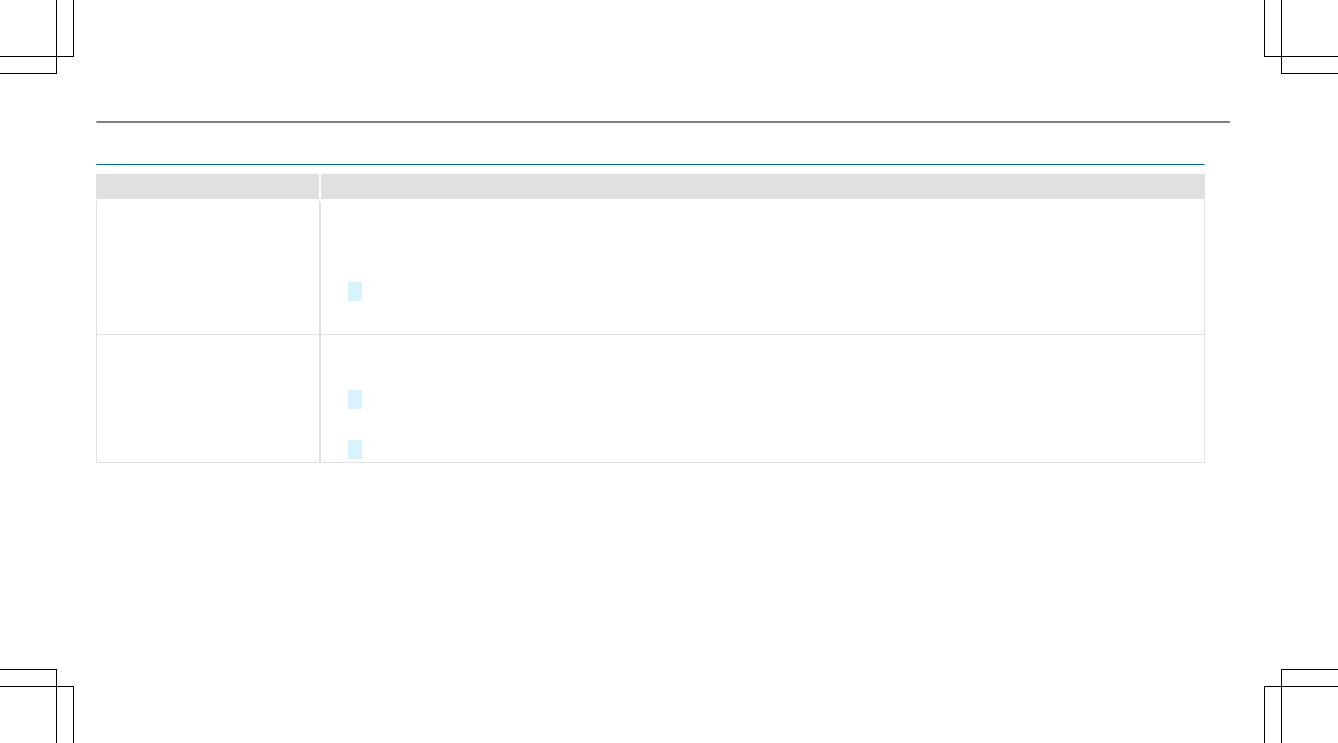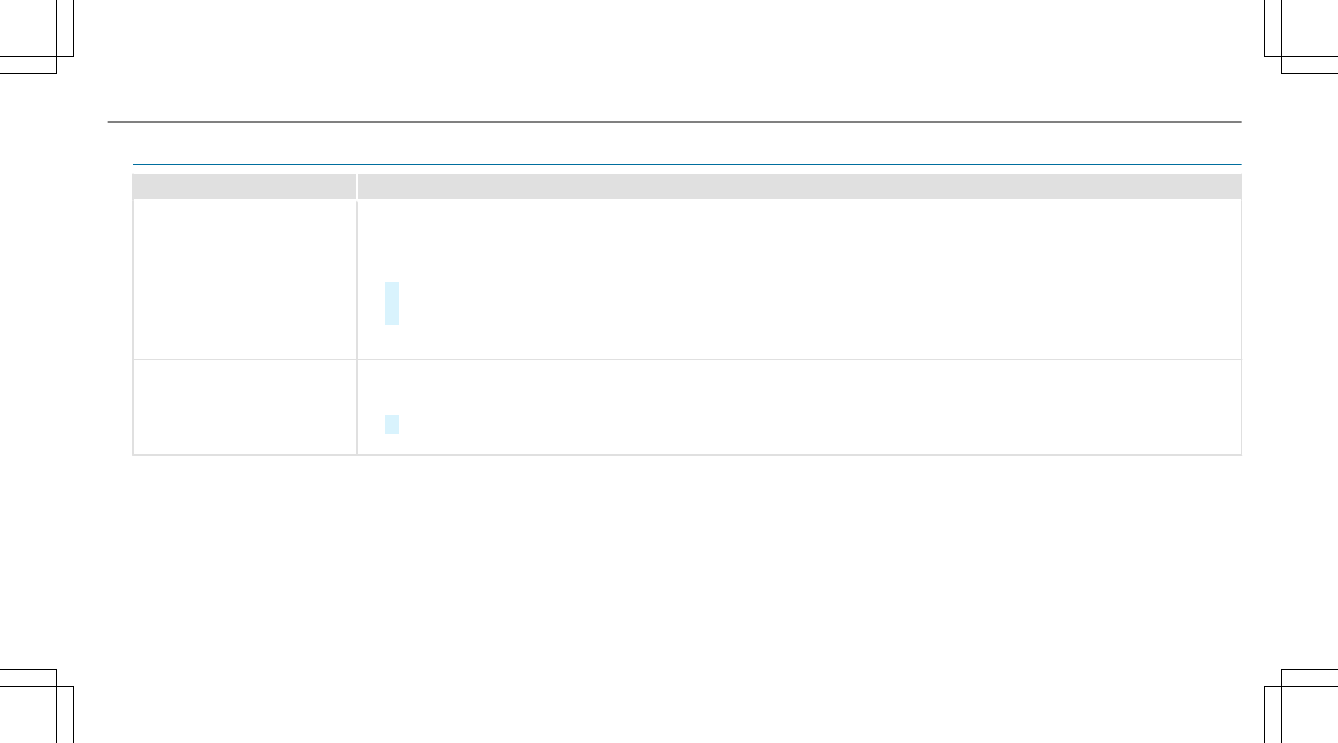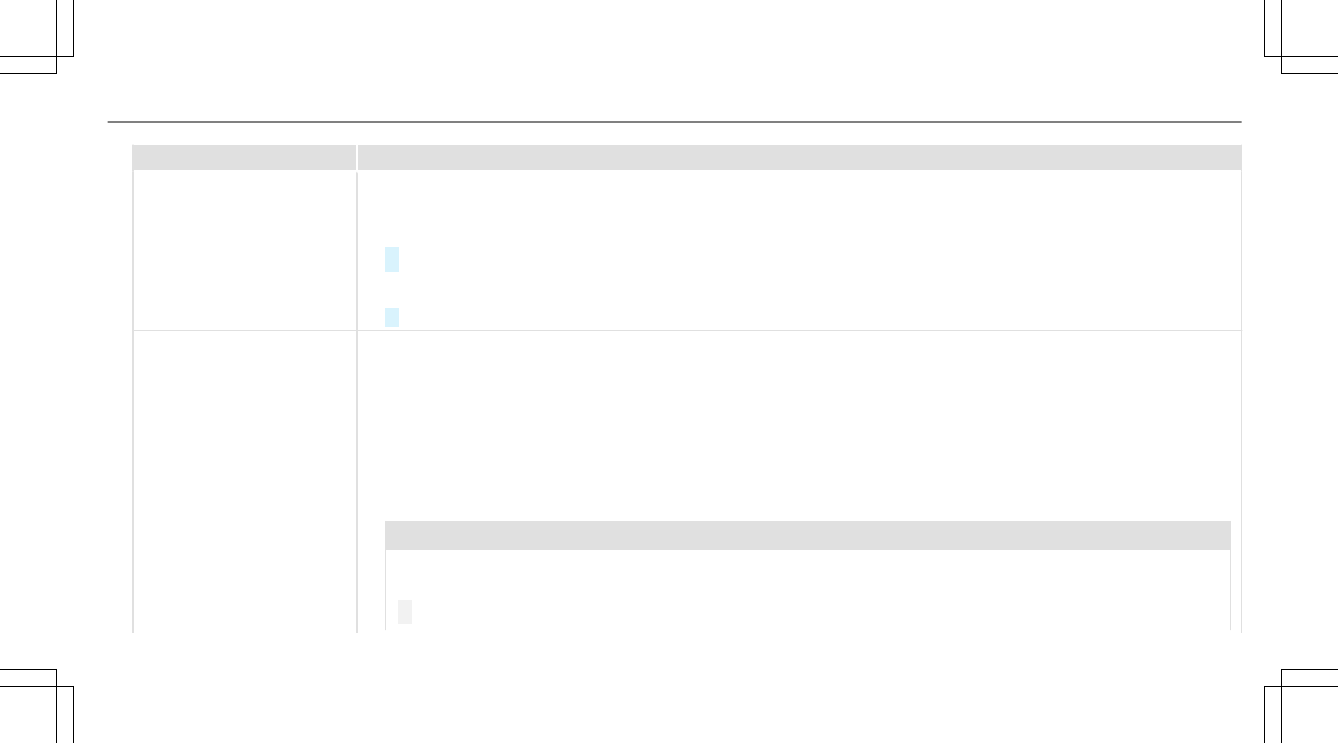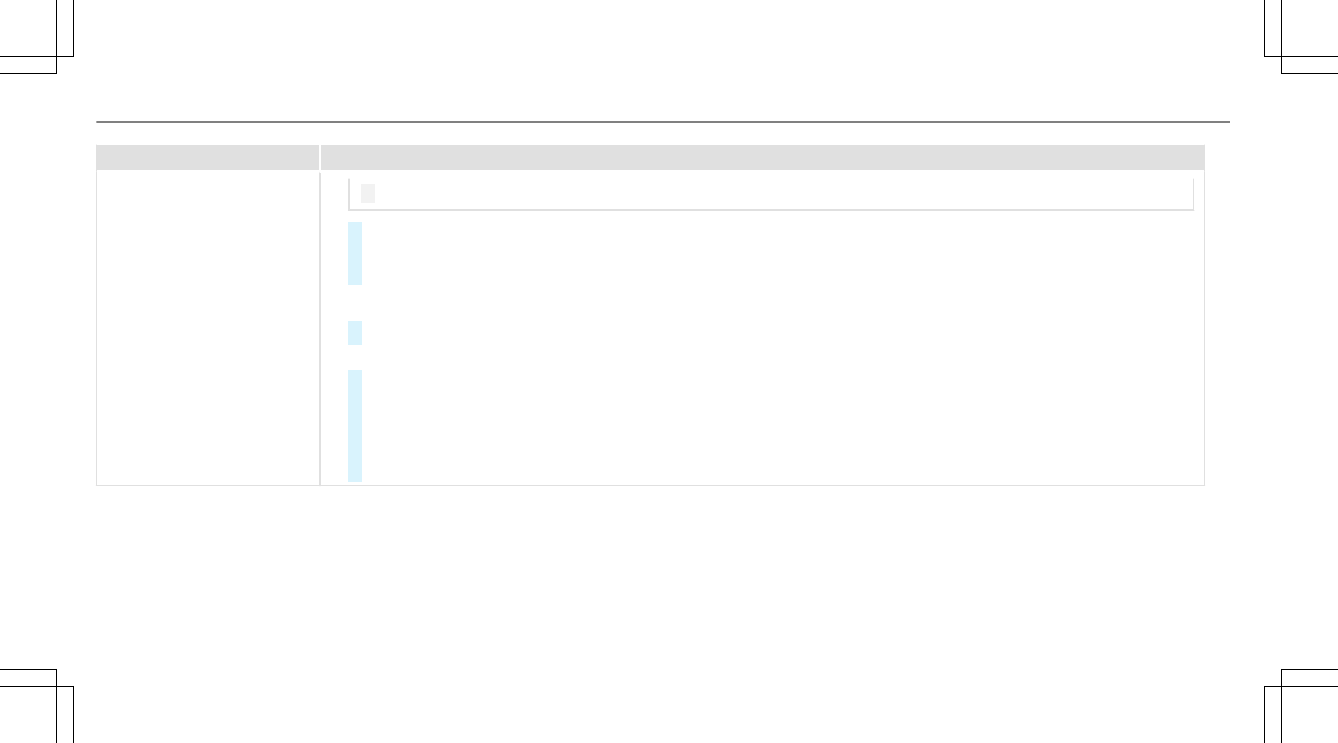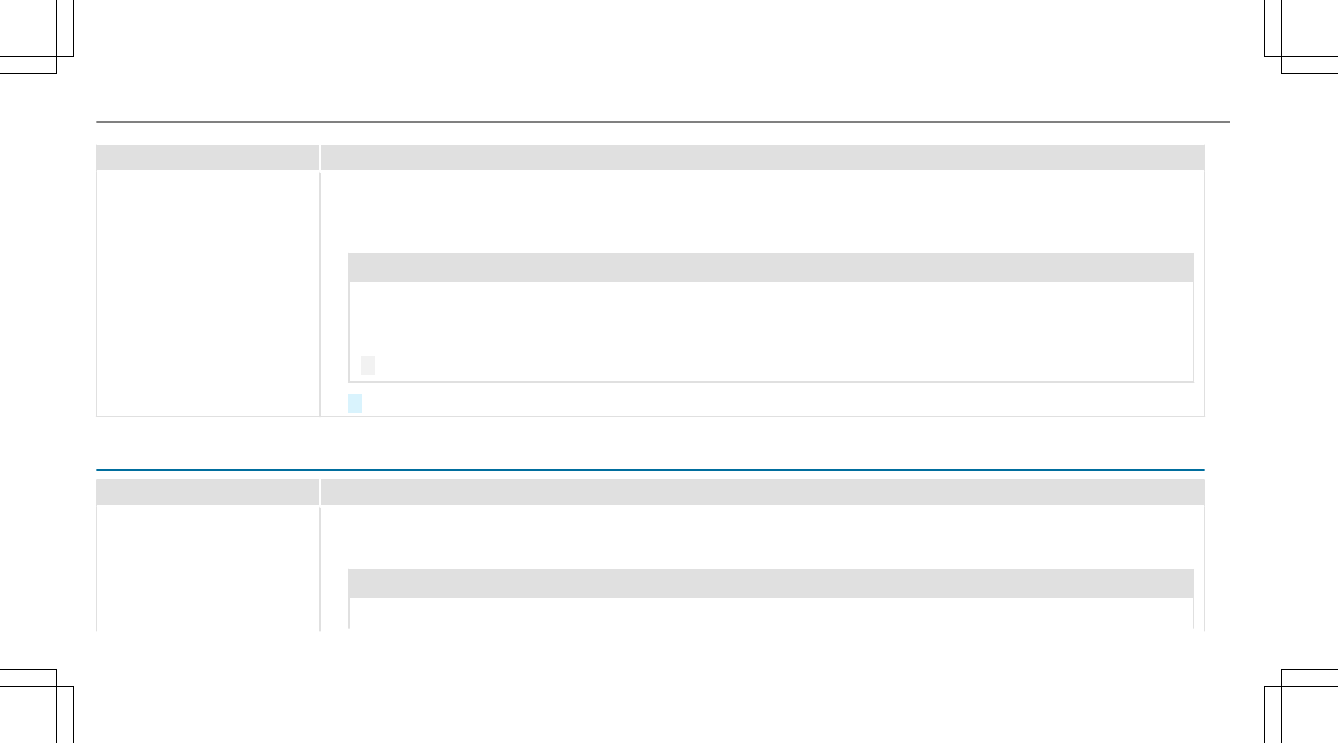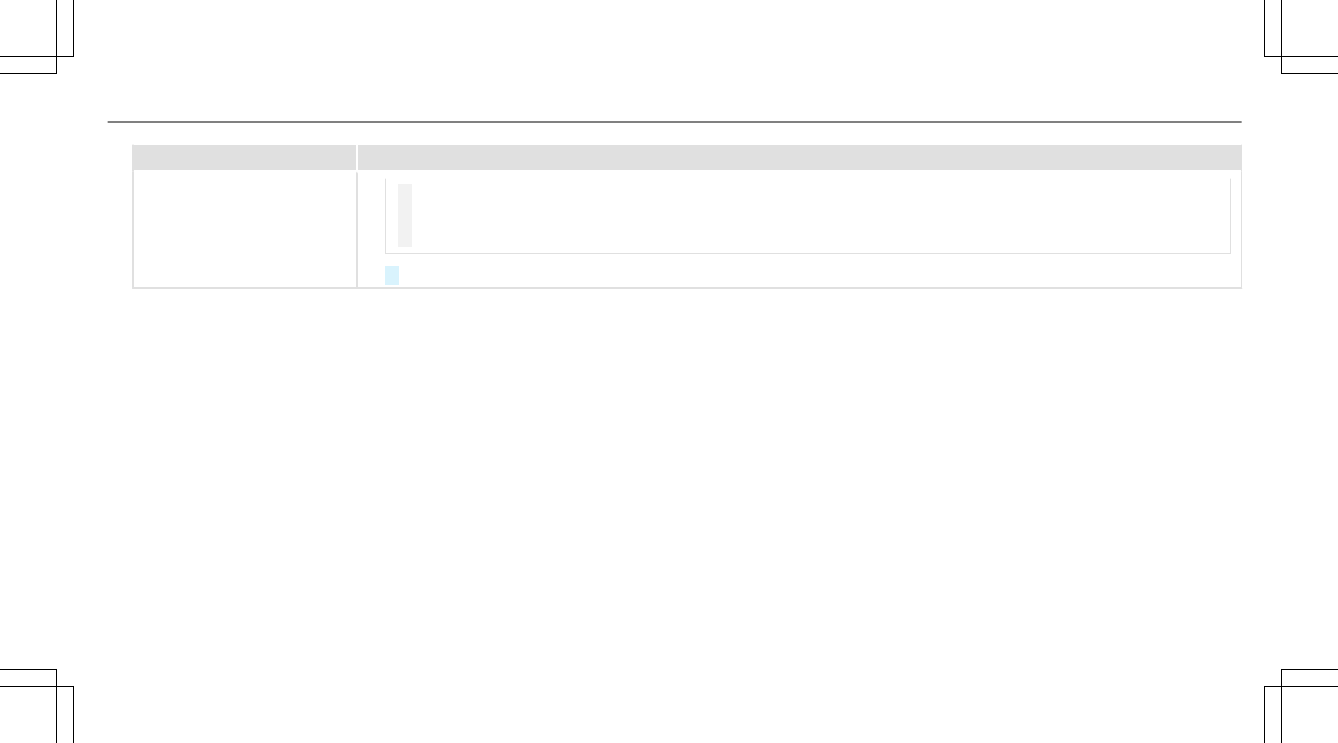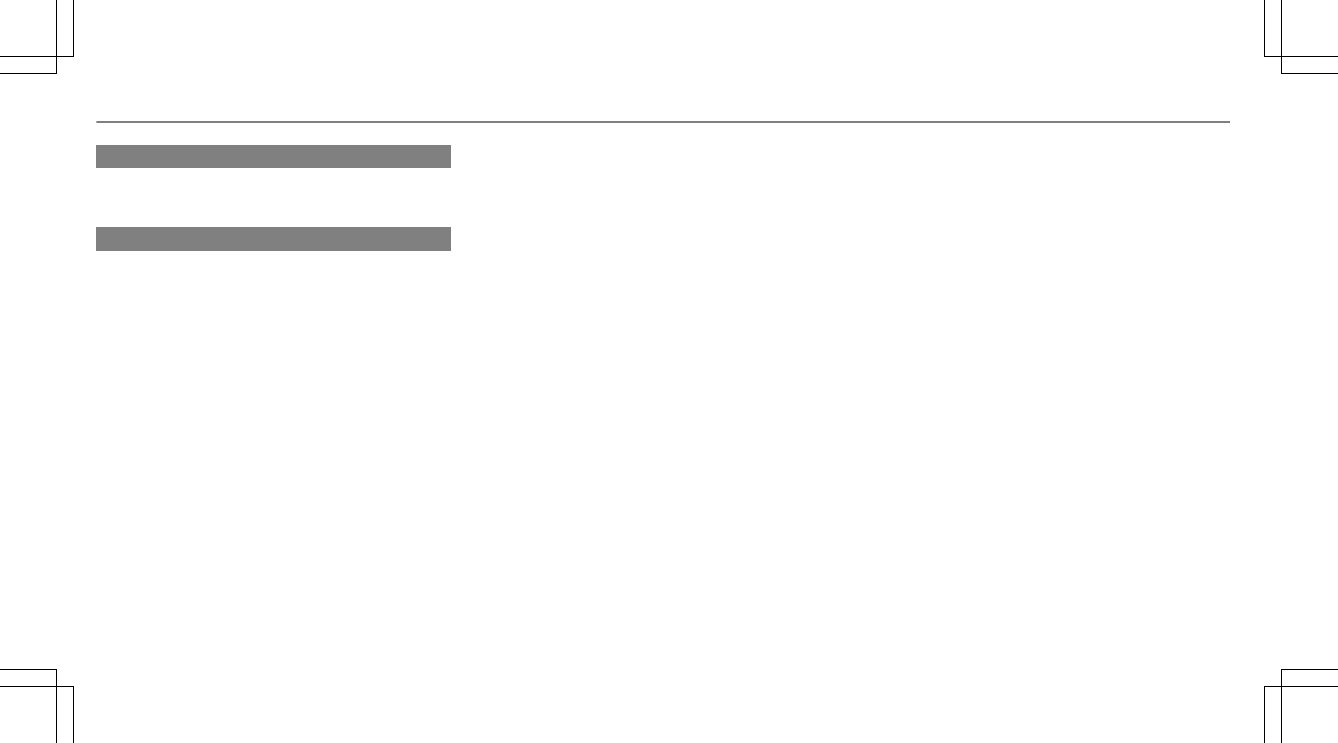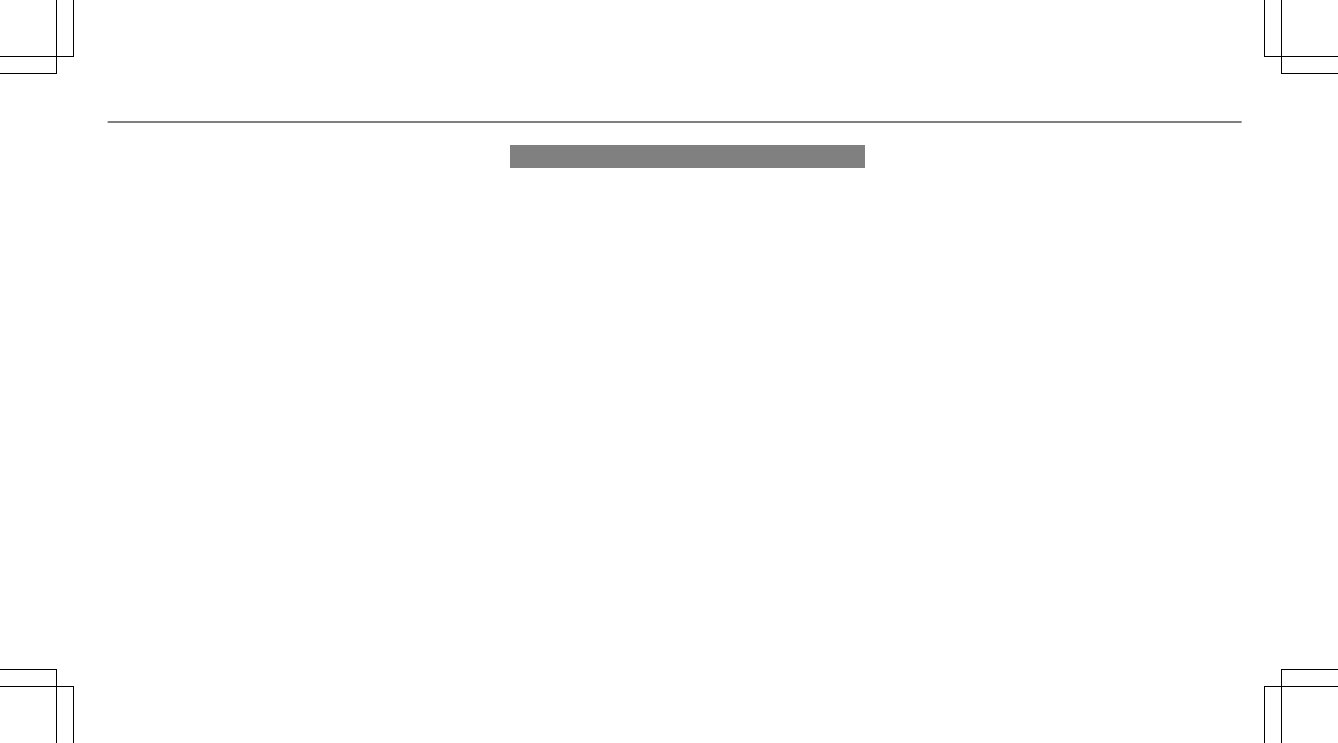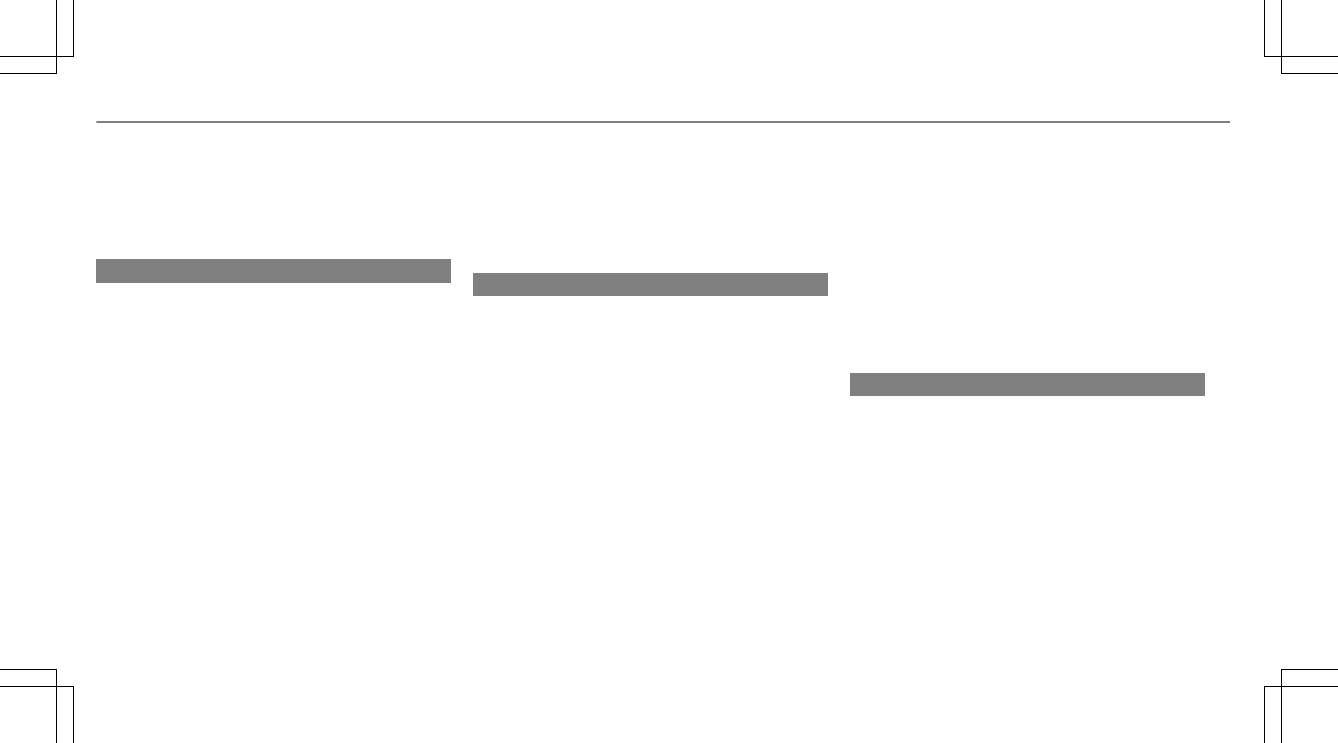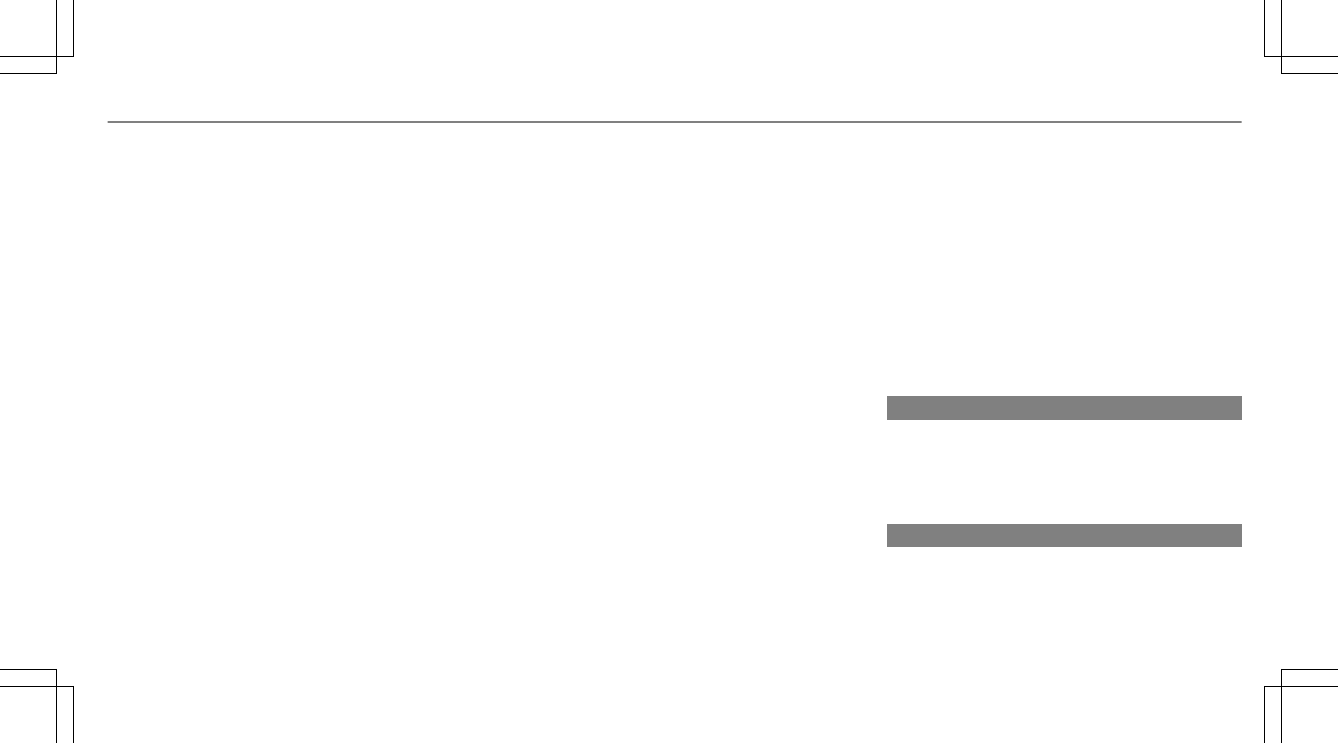Load-bearing capacity ......................... 336
Maximum tire load .............................. 335
Maximum tire pressure ....................... 335
Overview ............................................. 333
Speed rating ........................................ 336
Temperature grade .............................. 333
Tire Quality Grading ............................. 333
Tire size designation ............................336
Traction grade .....................................333
Tread wear grade .................................333
Tire load (maximum) ...............................335
Tire pressure ................................... 324, 325
Checking (manually) ............................ 325
Checking (tire pressure monitoring
system) ................................................ 327
Maximum ............................................ 335
Notes .................................................. 322
Restarting the tire pressure monitor‐
ing system ...........................................328
Tire pressure monitoring system
(function) ............................................. 326
Tire pressure table ...............................324
TIREFIT kit ...........................................305
Tire pressure monitor ............................. 328
Restarting ............................................ 328
Tire pressure monitoring system
Checking the tire pressure .................. 327
Function .............................................. 326
Tire pressure table .................................. 324
Tire Quality Grading ................................ 333
Tire temperature
Tire pressure monitoring system
(function) ............................................. 326
Tire tread .................................................. 321
Tire-change tool kit
Overview .............................................344
TIREFIT kit ................................................ 305
Storage location ..................................305
Using ................................................... 305
Tires
Characteristics .................................... 336
Checking .............................................321
Checking the tire pressure (man‐
ually) ................................................... 325
Checking the tire pressure (tire pres‐
sure monitoring system) ......................327
Definitions ........................................... 338
DOT, Tire Identification Number (TIN)
.............................................................334
Flat tire ................................................ 303
Installing .............................................. 349
Load index ...........................................336
Load-bearing capacity .........................336
Maximum tire load .............................. 335
Maximum tire pressure ....................... 335
MOExtended tires ................................ 304
Noise ................................................... 321
Notes ................................................... 112
Notes on installing ...............................341
Overview of tire labeling ......................333
Removing ............................................ 348
Replacing .....................................341 , 345
Restarting the tire pressure monitor‐
ing system ...........................................328
Rotating ............................................... 343
Selection .............................................341
Snow chains ........................................ 322
Speed rating ........................................ 336
Storing ................................................ 344
Temperature grade .............................. 333
Tire and Loading Information placard
.............................................................329
Tire pressure (notes) ........................... 322
450
Index































































































































































































































































































































































































































